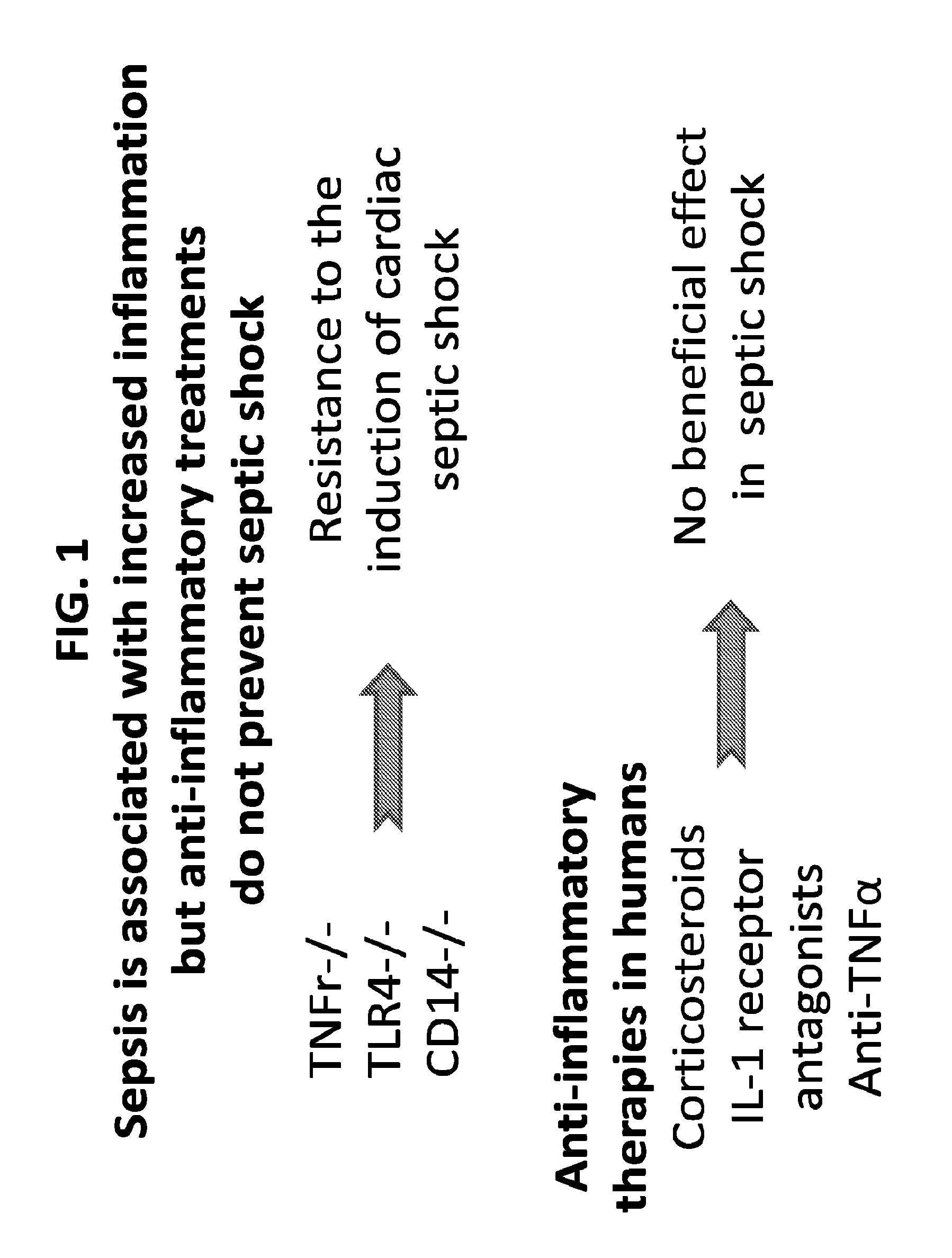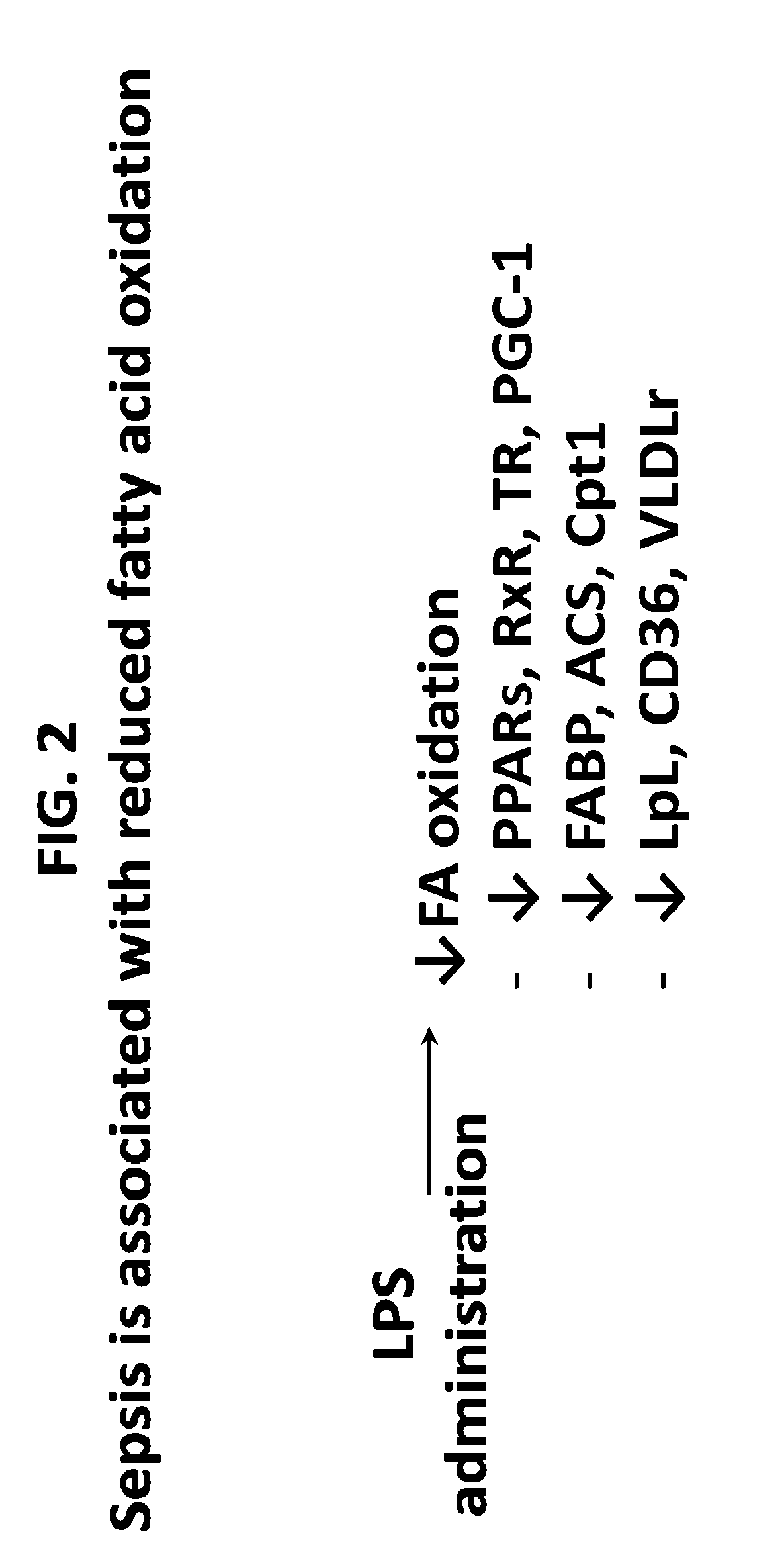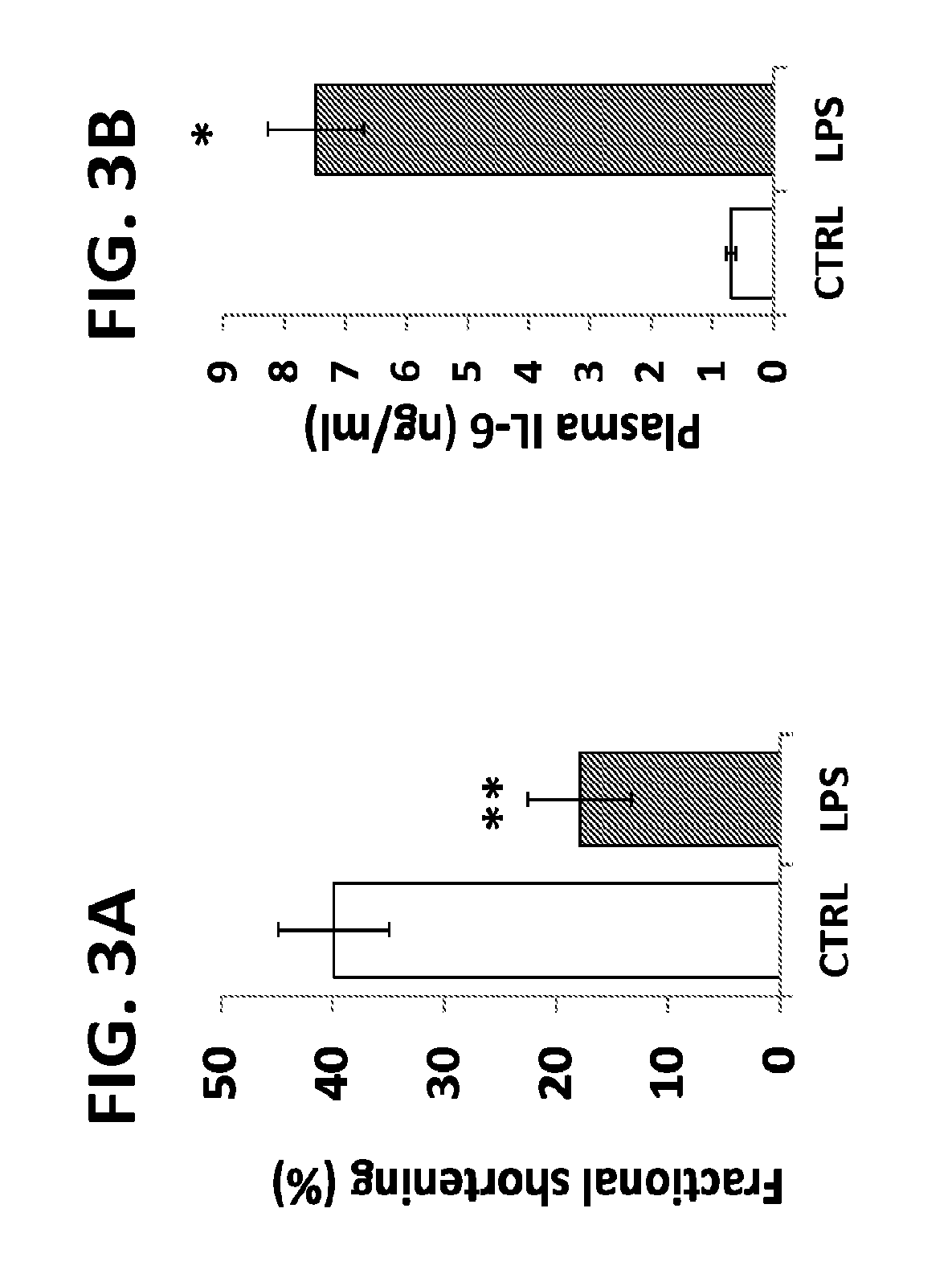Methods for Treating and Preventing Cardiac Dysfunction in Septic Shock
a technology for septic shock and cardiac dysfunction, applied in the direction of dsdna viruses, peptide/protein ingredients, drug compositions, etc., can solve the problems of increased mortality and cardiac dysfunction, and achieve the effects of increasing or maintaining cardiac function, reducing translation of mrna, and increasing fatty acid oxidation
- Summary
- Abstract
- Description
- Claims
- Application Information
AI Technical Summary
Benefits of technology
Problems solved by technology
Method used
Image
Examples
example 1
[0182]An animal model of cardiac septic shock was reproduced by treating 10 week old C57BL6 mice with LPS (5 mg / kg of body) for 6-8 h. Consistently with previous studies,154,165 LPS reduced fractional shortening (FIG. 3(A) and mRNA levels for cardiac PPARα, CD36, LpL, FATP, Cpt1β, PGC-1α and PGC-1β (FIG. 3(D)). These changes were associated with increased cardiac gene expression of inflammation-associated genes (IL-1α, IL-6 and TNFα) and plasma IL-6 protein levels (FIG. 3(B)-(C)). Cardiac ATP was reduced by 44% in LPS-treated mice and FAO was reduced by 61%. Thus, the model is valid for cardiac septic shock. FIG. 2.
example 2
[0183]The next experiment assessed whether the cardiac miR (microRNA) profiles of LPS-treated mice resemble the respective profiles in heart failure. (FIG. 5(A)-(C)). MiR array analysis of cardiac RNA from LPS-treated mice showed that none of the miRs that have been associated with heart failure, [miR-1, -133, -208, -195, -24, -125b, -199a and 214149-151], was affected (FIG. 5 (C)). Another indication of heart failure is the switch from the α-MHC isoform to β-MHC.166, 167 Cardiac mRNA analysis did not indicate such change (FIG. 6) in the model, so the mechanism of LPS-mediated reduction in FAO is distinct from that which occurs with afterload induced heart failure.
example 3
[0184]Sepsis following Gram negative (−) bacterial infection is associated with both elevated inflammation (FIG. 1) and reduced FAO (FIG. 2). Animals that are knock-out for inflammation-related genes133-139 are resistant to LPS-mediated sepsis and have improved cardiac function or viability. However, anti-inflammatory drugs, although treatment of inflammation may be protective in the early stage of sepsis, has not improved mortality.140-145 LPS treatment leads to reduced expression of PPARα and other FA metabolism related-genes146-148 (FIG. 3). LPS also suppresses glucose catabolism. FIG. 4(B) Heart failure reduces FAO and increases glucose utilization FIG. 4(A). Several miRs have been linked to heart failure149-151 that are also associated with impaired FAO, however, none of these miRs are significantly altered in the hearts of LPS-treated mice. (FIG. 5) Thus, mechanisms that reduce FAO exclusive of miR-induced changes are ignited by LPS treatment.
PUM
| Property | Measurement | Unit |
|---|---|---|
| Time | aaaaa | aaaaa |
| Composition | aaaaa | aaaaa |
Abstract
Description
Claims
Application Information
 Login to View More
Login to View More - R&D
- Intellectual Property
- Life Sciences
- Materials
- Tech Scout
- Unparalleled Data Quality
- Higher Quality Content
- 60% Fewer Hallucinations
Browse by: Latest US Patents, China's latest patents, Technical Efficacy Thesaurus, Application Domain, Technology Topic, Popular Technical Reports.
© 2025 PatSnap. All rights reserved.Legal|Privacy policy|Modern Slavery Act Transparency Statement|Sitemap|About US| Contact US: help@patsnap.com



